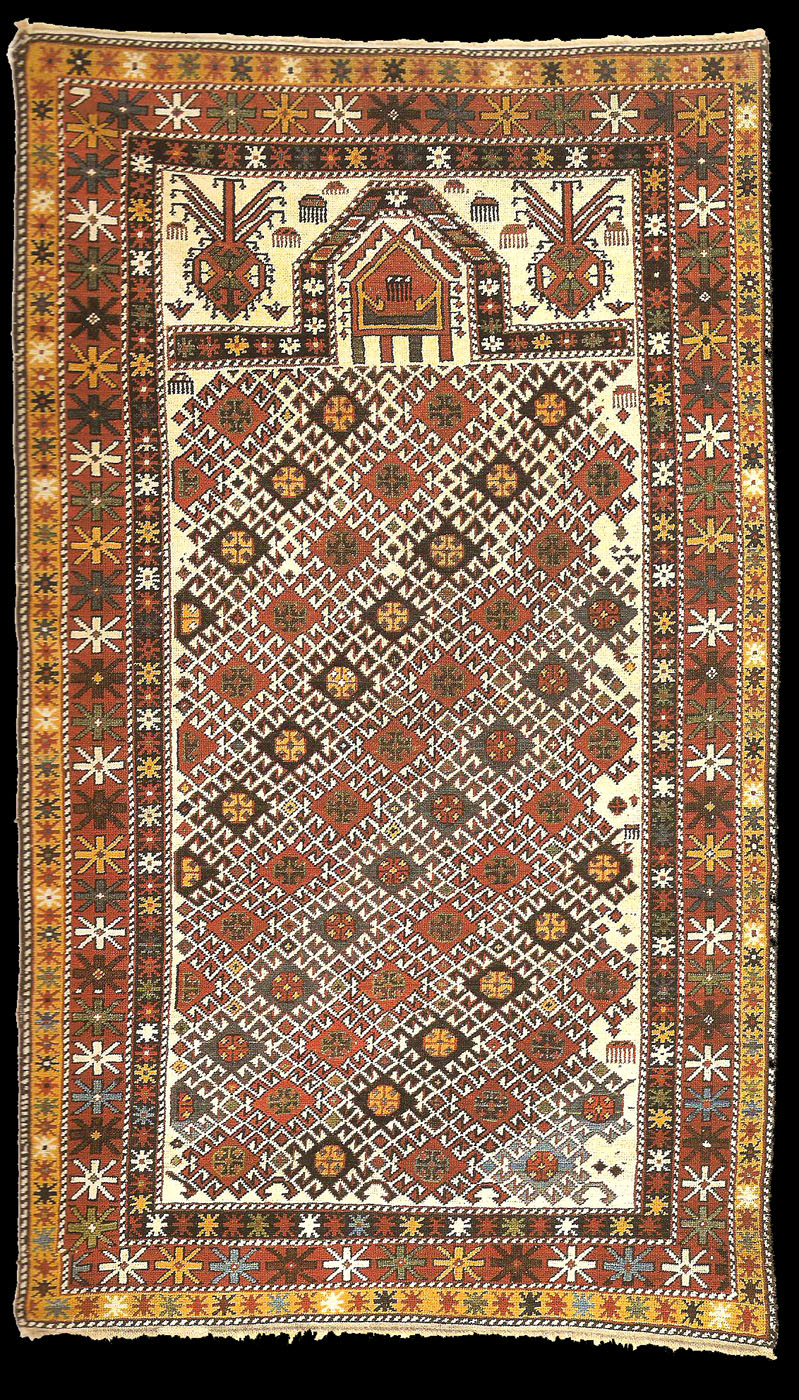|
The elongated prayer gable (tagh) of the light central field has a prayer
niche (mihrab) which covers nine tenths of the surface. It is ornamented
with staggered lozenges which have unusually large hooks. The colours of
both the lozenges as well as their rosettes have been selected in such a way
that they form diagonal rows. This effect gives the central field calmness
which would not have been the case otherwise because of the hooks. At the
side, small amulets such as triangles, lozenges and combs have been woven
into the carpet. They have a protective purpose. The mihrab shows a pentagon
with four flaps at the bottom and two big leaves which are parallel to the
diagonal stripes. As we mentioned before, this motif is known from various
regions. The two hexagons with their disproportionate extensions at the top
give an extremely archaic and overwhelming impression. Normally they cover
the spots which the prayer's hands touch when he bends down (sajdeh or sujud)
as part of his prayers. The three-stripe border composition is designed as a
row of star blossoms. The minor borders differ from the main border in terms
of dimension; the main border is almost twice as big as the minor ones.
wefts: camel hair
warps: wool
 |

